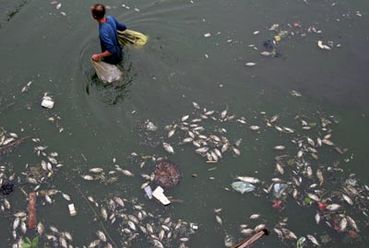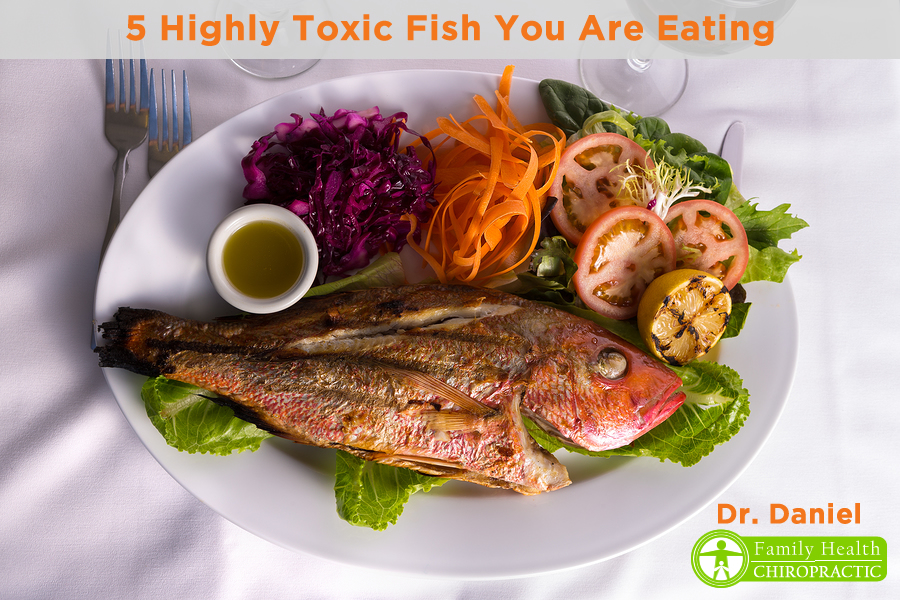
But as our environment (especially our oceans) has become more polluted, so have our fish.
We now live in a time where fish is one of the best foods to eat; yet also detrimental to our health. In this article I will be discussing 5 highly toxic fish that you should avoid. Just like grass fed beef is healthier than commercially grown; fish caught in the wild are much better for you than farm-bred or farm-raised.
The most common farm-raised fish being consumed today includes: salmon, tilapia, sea bass, catfish, and cod.
Another issue is the ecological impact of eating fish. As population soars, the demand for food has increased and this is becoming a major issue for the sea. This environmental factor involves either using sustainable fishing techniques in the wild that don't overly deplete stocks of the target fish or other species, or aquaculture practices that don't pollute or permit farmed fish to escape into the wild. (In some cases wild-caught fish is best; in others, the farms are actually more sustainable and clean!
5 Highly Toxic Fish
1. Farm Raised Salmon
Farmed salmon has been shown to have 10 times the amount of cancer causing pollutants compared to the wild type. Truth is, If you knew what went into the feeds of farm raised fish, you would be horrified and likely never eat farmed fish again.
Researchers at Indiana University and five other research centers say increased toxin levels in farm-raised salmon pose health risks to people who eat it regularly. Their study, which appears in (Jan. 9) issue of Science, is the most comprehensive analysis to date of salmon toxin concentrations.
2. Tilapia
This freshwater favorite is celebrated for its mild flavor and versatility, but unfortunately, the benefits end there. Recent studies have concluded that eating Tilapia is associated with increased inflammation that can lead to heart disease, arthritis, asthma and other problems.
3. Orange Roughy
The biggest concern with this fish is it’s elevated amounts of mercury, according to the Environmental Defense Fund. High doses of mercury can interfere with normal brain function and are particularly dangerous for pregnant and breastfeeding women and small children.
4. Atlantic Halibut
This fish is high in mercury, but the bigger issue is whether or not Atlantic halibut should still be listed as endangered! There's no question that the environmental impact itself is still in terrible shape after years of overfishing. It’s unfortunate that endangered fish do not get the same attention that land animals do. I try to make it a point to bring it to light.
5. Farmed Shrimp
I’ll be honest…I love shrimp. But imported farmed shrimp may contain antibiotics and chemical residues that can cause disease. Studies suggest that ninety (90) percent of all shrimp comes from Asia and is raised in a toxic sewage pond environment. This water is so contaminated and diseased that the farmers use outrageous amounts of antibiotics. So the next time you order cocktail shrimp… realize that you’re actually biting into a cocktail of antibiotics, bacteria, poisons and other toxins that pose a tremendous short and long-term health risk
5 Fish You Should Eat Every Week
1. Wild Alaskan Salmon
Fresh, frozen, or canned are all OK as long as it’s wild. I personally choose Sockeye Salmon. Realize that wild salmon will cost a bit more more than farmed, but considering that studies show farmed salmon is full of parasites and disease, a few extra dollars goes a long way!
2. Arctic Char
Either wild or farmed Arctic char would be a suitable substitute for wild salmon. According to the Environmental Defense Fund, Arctic char, unlike farmed Atlantic salmon, are farmed in an environmentally responsible manner. Since Arctic char is much less plentiful than salmon, it costs a bit more, usually ranging in price from about $9 to about $11 per pound.
3. Trout
Lake trout have a higher risk of being contaminated, but the farmed variety get a “best choice” rating from the Monterey Bay Aquarium Seafood Watch, a consumer watch group.
4. Sardines
This small sea creature is seafood superstar. It’s affordable, sustainable and packs a nutrition power punch with 23 grams of protein for a single serving! Sardines are loaded with omega-3s and naturally high in vitamin D and you can eat them fresh or from a can!
5. Anchovies
Anchovies pack big flavor for such small fish. This makes them highly sustainable. They’re so strong that only a small amount of anchovy is needed to add flavor to sauces, salad dressings, pasta and pizza. What’s amazing is that like sardines, even though they’re small, they deliver large amounts of nutrients in the form of essential fatty acids, protein and other micro minerals.
References:
Monterey Bay Aquarium Seafood Watch. ”Seafood Recommendations,” accessed April 2014.http://www.montereybayaquarium.org.
Science 9 January 2004: Vol. 303 no. 5655 pp. 226-229
Love, David C. Environmental Science Technology, 2011, Veterinary Drug Residues in Seafood Inspected by the European Union, United States, Canada, and Japan from 2000 to 2009. 45(17)7232–7240.
Environmental Working Group. Reports Farmed Fish PCB’s. http://www.ewg.org/reports/farmedpcbs (accessed March 2012).
Environmental Defense Fund. ”Complete List of Seafood Eco-Ratings,” accessed April 2014. http://apps.edf.org.



